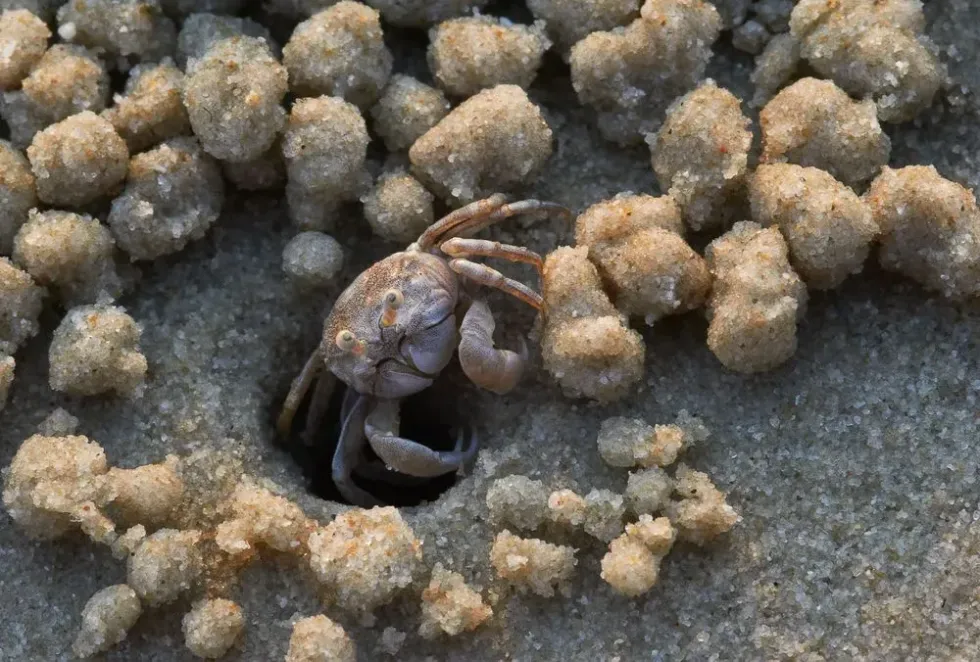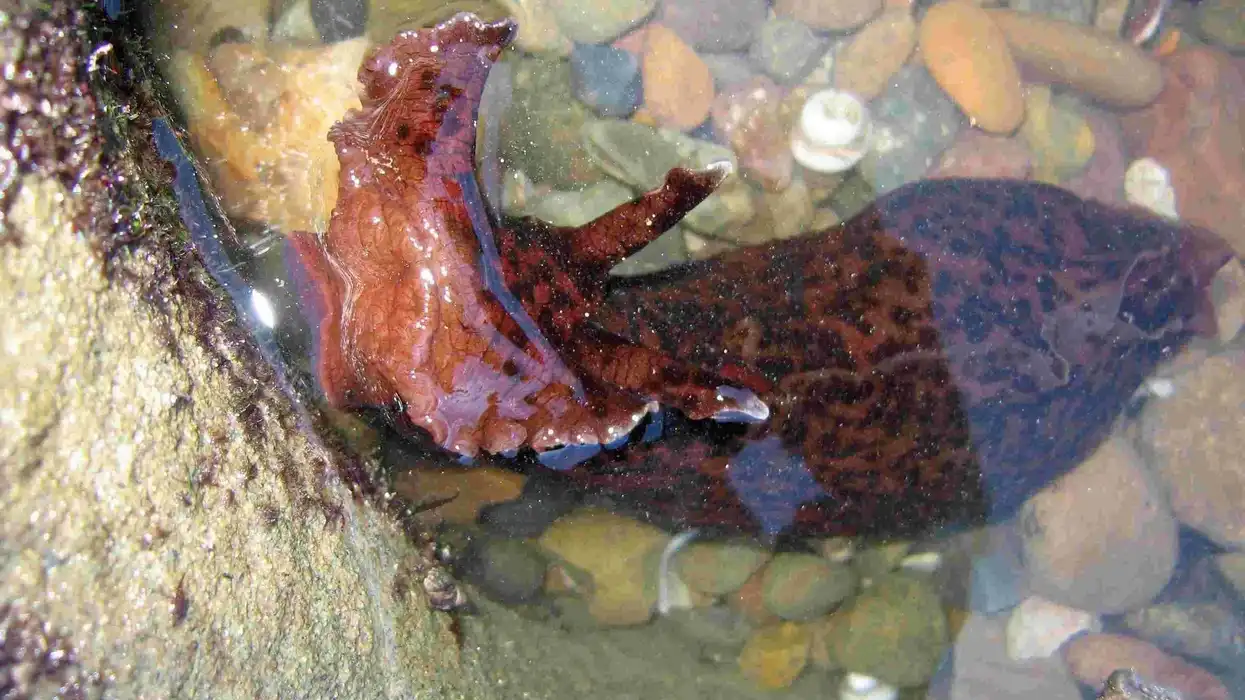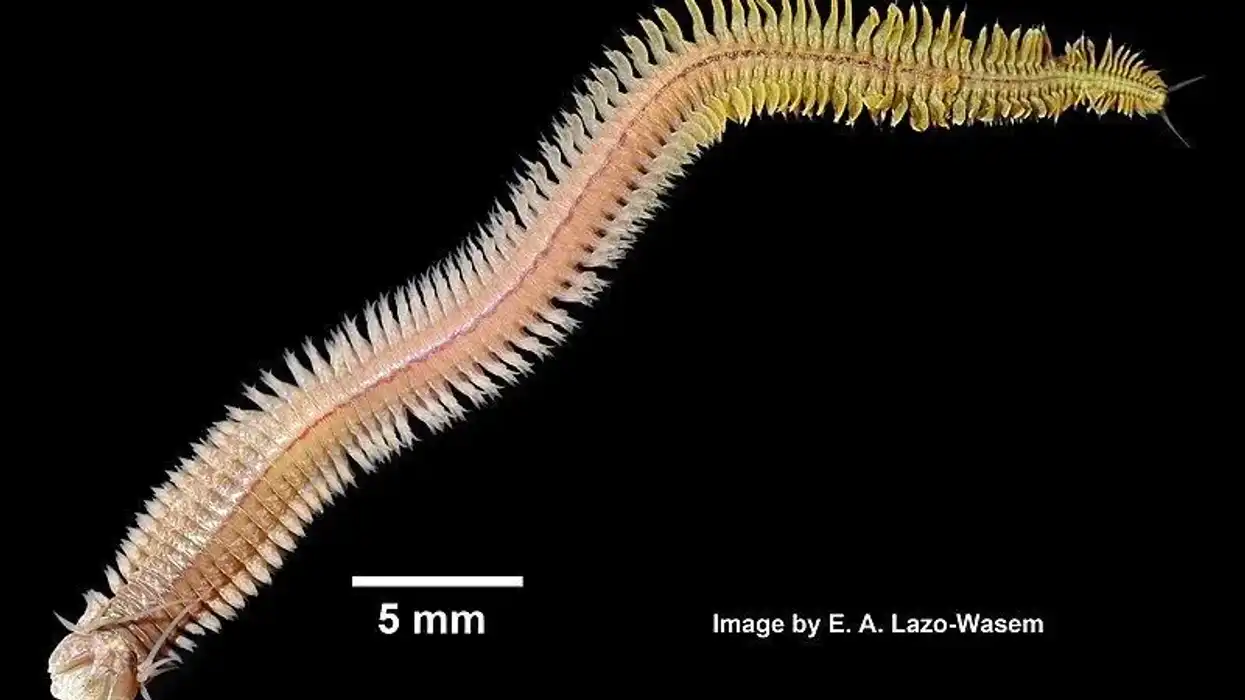The sand bubbler crab of Scopimera and Dotilla genera is of the family Dotillidae. Their body color matches the sand.
Peter Frosskal, a Swedish-speaking Finnish naturalist and explorer, first described the sand bubbler crab as Cancer sulcatus in 1775. Wilhelm de Haan first described the Scopimera genus as a subgenus under Ocypode in 1833.
However, Scopimera globosa, the first species, was officially described in 1835. Later, William Stimpson published the available Dotilla instead of the preoccupied name Doto, which was a genus name given in 1833. Currently, the ongoing revisions being done to the sand bubbler crab taxonomy might split the Scopimera genus into Dotilla and Scopimera genera.
There are currently eight and fifteen recognized species in Dotilla and Scopimera, respectively. There are 59 species in the Dotillidae family, and almost half of them are of the Ilyoplax genus.
These sand bubbler crabs leave an evident set of pellets of sand on subtropical and tropical Indo-Pacific sandy beaches. There are currently nine recognized genera under this family.
If you like these sand bubbler crab facts, then do read these Dungeness crab facts and blue crab facts for more.
Sand Bubbler Crab Interesting Facts
What type of animal is a sand bubbler crab?
The sand bubbler crab, phylum Arthropoda, and order Decapoda is a tiny crab that lives in sandy burrows and remains there until the high tide is over. This crab emerges back on the surface after the high tide.
This crab feeds by filtering the sand using their mouthparts and leaves balls of sand or sand pellets after processing. The crab works radially from the entrance through to the burrows and uses the same burrows when the tide rises disintegrating the pellets.
They wait for the tide to be over in a bubble of air in each burrow. They are shy and sensitive to any movement and hide in their burrow at any sight of danger.
What class of animal does a sand bubbler crab belong to?
The sand bubbler crab belongs to the Malacostraca class of animals.
How many sand bubbler crabs are there in the world?
The exact number of sand bubblers in the world is not yet known.
Where does a sand bubblercrab live?
The tiny sand bubbler crab lives on the sandy beaches of the Indo-Pacific region like easter island, Polynesia, and Hawaii.
What is a sand bubbler crab's habitat?
The sand bubbler crab occupies the subtropical and tropical beaches in the Indo-Pacific regions in a burrow. You can find the tiny crab below water lines on sandy shores on clean bare sand.
Who do sand bubbler crabs live with?
The sand bubbler crab lives on their own in a burrow.
How long does a sand bubbler crab live?
The sand bubbler crab lives up to five years.
How do they reproduce?
The reproductive cycle of sand bubbler crab occurs in the months of February through August. It has also been recorded that during mating a waving behavior is observed by the burrow-holding males. Two types of mating behavior are underground and surface substrate mating.
The mating occurs inside that burrow and also lays the eggs in these burrows. Some females lay eggs twice per year. The last male that mates fertilizes the eggs in the burrow.
What is their conservation status?
The conservation status of the sand bubbler crab has not yet been evaluated.
Sand bubbler Crab Fun Facts
What do sand bubbler crabs look like?
The sand bubbler crab's carapace has several distinct gas windows present on the merus of the hairy legs on the thoracic sternites. An identical trait has been evolved in parallel in the Petrolisthes genus of the porcelain crabs.
The crab's appearance resembles the sand balls that they create on the sand. The crab has a sandy brown or tan-colored body. The long and flat downward-facing pincer allows this crab to scoop up sand particles to their mouthparts to extract nourishment.
This tiny crab has a spherical body with eyes roll back into grooves when they move into the burrows. Males have longer and larger claws than females.

*Please note that this is an image of a fiddler crab, not a sand bubbler crab. If you have an image of a sand bubbler crab, please let us know at hello@kidadl.com
How cute are they?
The tiny sand bubbler crab, like all crabs, is not considered cute.
How do they communicate?
The sand bubbler crab communicates through body movements, drumming claws, and flapping the pincers.
How big is a sand bubbler crab?
The sand bubbler crabs are tiny and grow up to 0.4 in (1 cm) in length. They are of the same size as a small hermit crab.
How fast can sand bubbler crabs move?
The exact speed of the sand bubbler crabs is not known. However, they run very fast.
How much does a sand bubbler crab weigh?
The weight of sand bubbler crabs is around 0.009 lb (4.1 g). The minimum weight of a Dungeness crab is 60% more than the average weight of this crab.
What are the male and female names of the species?
There is no specific name given to male and female sand bubblers.
What would you call a sand bubbler crab?
There is no specific name given to the baby sand bubbler crab.
What do they eat?
The tiny sand bubbler crab diet is carnivorous. They feed on benthic plankton, tiny detritus, and also shrimps. They feed on microscopic edible organic matter from the sand and they toss them away as sand balls creating patterns.
Are they harmful?
No, sand bubbler crabs are not harmful to human beings.
Would they make a good pet?
No, they would not make a good pet and it is very hard to keep these crabs. The sand bubbler crab pet is not quite popular.
Did you know...
By the patterns made in their sand balls, you can predict how long a tide has been out. If the sand bubbler crab patterns of the sand balls seem intricate, then the tide has been out for a long time.
The sand bubblers have many predators like seabirds, gulls, raccoons, shorebirds, octopuses, and sea otters. They also act as parasites on oysters, mussels, sea cucumbers, sand dollars, and more species.
As long as the gills of the crabs are moist they can stay on the land.
These crabs have four pairs of walking legs and two pairs of pincers. All types of crabs have two claws on their fore-legs.
Why do sand bubbler crabs make sand balls?
The sand bubbler crab feeds by filtering the sand using their mouthparts and leaves balls of sand or sand pellets after processing. They absorb the organic matter from the sand particles leaving behind tiny sand balls.
Can you keep sand bubbler crabs as pets?
No, it is very hard to keep sand crabs as pets. These sand crabs need habitats with a large sandy surface for them to create burrows.
Here at Kidadl, we have carefully created lots of interesting family-friendly animal facts for everyone to discover! For more relatable content, check out these green crab facts and hermit crab facts pages.
You can even occupy yourself at home by coloring in one of our free printable sand bubbler crab coloring pages.









